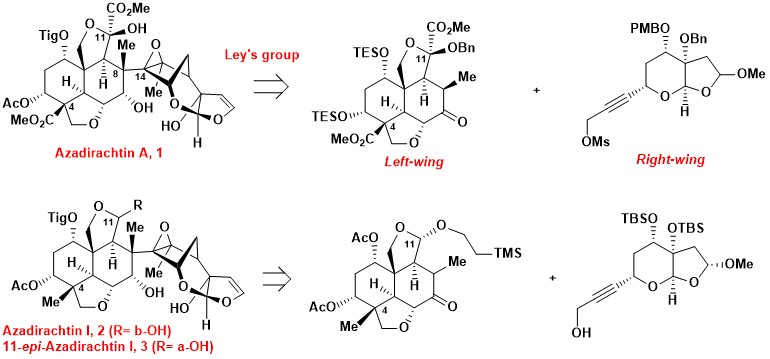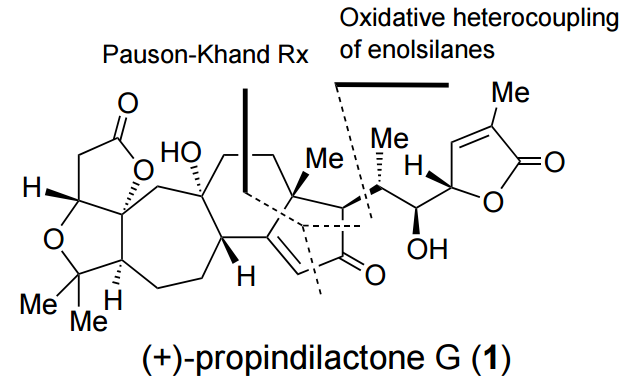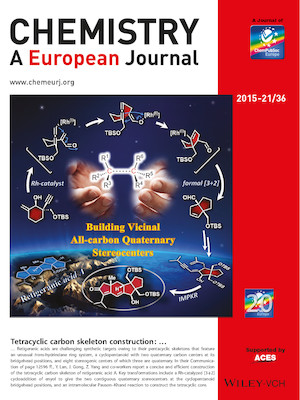News&Event
96. Asymmetric Total Synthesis of Propindilactone
Lin You, Xin-Ting Liang, Lingmin Xu, Yue-Fan Wang, Jia-Jun Zhang, Qi Su, Yuanhe Li, Bo Zhang, Shou-Liang Yang, Jia-Hua Chen*, and Zhen Yang*
J. Am. Chem. Soc., 2015, 137, 10120.
• Highlighted in Synfacts, 2015, 11, 1022.
95. Asymmetric Total Synthesis of (−)-Maoecrystal V
Wei-bin Zhang, Wen-bin Shao, Fu-zhuo Li, Dr. Jian-xian Gong*, Prof. Dr. Zhen Yang*
Chem. Asian J. 2015, 10, 1874.
• Highlighted in Org. Chem. Highlights 2016, August 22.
The asymmetric total synthesis of (−)-maoecrystal V, a novel cytotoxic pentacyclic ent-kaurane diterpene, has been accomplished. Key steps of the current strategy involve an early-stage semipinacol rearrangement reaction for the construction of the C10 quaternary stereocenter, a rhodium-catalyzed intramolecular O−H insertion reaction, and a sequential Wessely oxidative dearomatization/intramolecular Diels–Alder reaction to forge the pentacyclic framework of maoecrystal V.
94.Diastereoselective Synthesis of Cyclopentanoids: Applications to the Construction of the ABCD Tetracyclic Core of Retigeranic Acid A [Inside Back Cover]
Junlin Zhang, Xiao Wang, Shuang Li, Dian Li, Song Liu, Prof. Dr. Yu Lan*, Dr. Jianxian Gong*, Prof. Dr. Zhen Yang*
A concise and efficient approach for the construction of the tetracyclic carbon skeleton of retigeranic acid A is described. The key transformations include a novel Rh-catalyzed [3+2] cycloaddition of enyol to afford cyclopentanoid E, bearing two contiguous quaternary stereocenters at the bridgehead positions, and an intramolecular Pauson–Khand reaction to construct the advanced tetracyclic core structure of retigeranic acid A.
Long R., Huang J., Fu J.-K., Zhang J.-L. and Zhang W.-B. have successfully defended their dissertations
Long Rong, Huang Jun, Fu Jun-kai, Zhang Jun-lin and Zhang Wei-bin have successfully defended their dissertations and shall be conferred the doctor’s degree. Congratulations!
Fu Jun-kai is also been titled as “Outstanding Graduates of Peking University” due to his excellent academic performance. Congratulations!
Synthetic progress toward 11-epi-azadirachtin I
Azadirachtin A is a highly oxygenated tetranortriterpenoid isolated from the neem tree Azadirachta Indica A. Juss (Meliaceae). Azadirachtin A is a powerful insect repellent with low mammalian toxicity, however, there is limited structure-activity relationship information and it has an elusive mechanism-of-action.2 Various azadirachtin congeners possess remarkable antifeedant activity, such as azadirachtin I acts against Spodoptera litura with similar potency to azadirachtin A. The anti-insect properties of these azadirachtin-type limonoids are less well studied, partially due to limited availability.
Azadirachtin A possesses a number of intriguing structural elements, such as a highly oxygenated scaffold, sixteen contiguous chiral centers including seven quaternary ones, and a crowded C8–C14 bond. These fascinating and highly complex structural features have challenged as well as inspired synthetic chemists for decades, culminating in the “relay total synthesis” of azadirachtin A by Ley et al. One key to Ley’s success is the strategic disconnection of the C8–C14 bond, leading to the left- and right-wing (4–5) fragments.

Synthetic progress toward 11-epi-azadirachtin I was reported as two related paper which were published on Org. Lett.. For more details, please see the paper online: https://web.pkusz.edu.cn/yang/93/ and https://web.pkusz.edu.cn/yang/92/.






